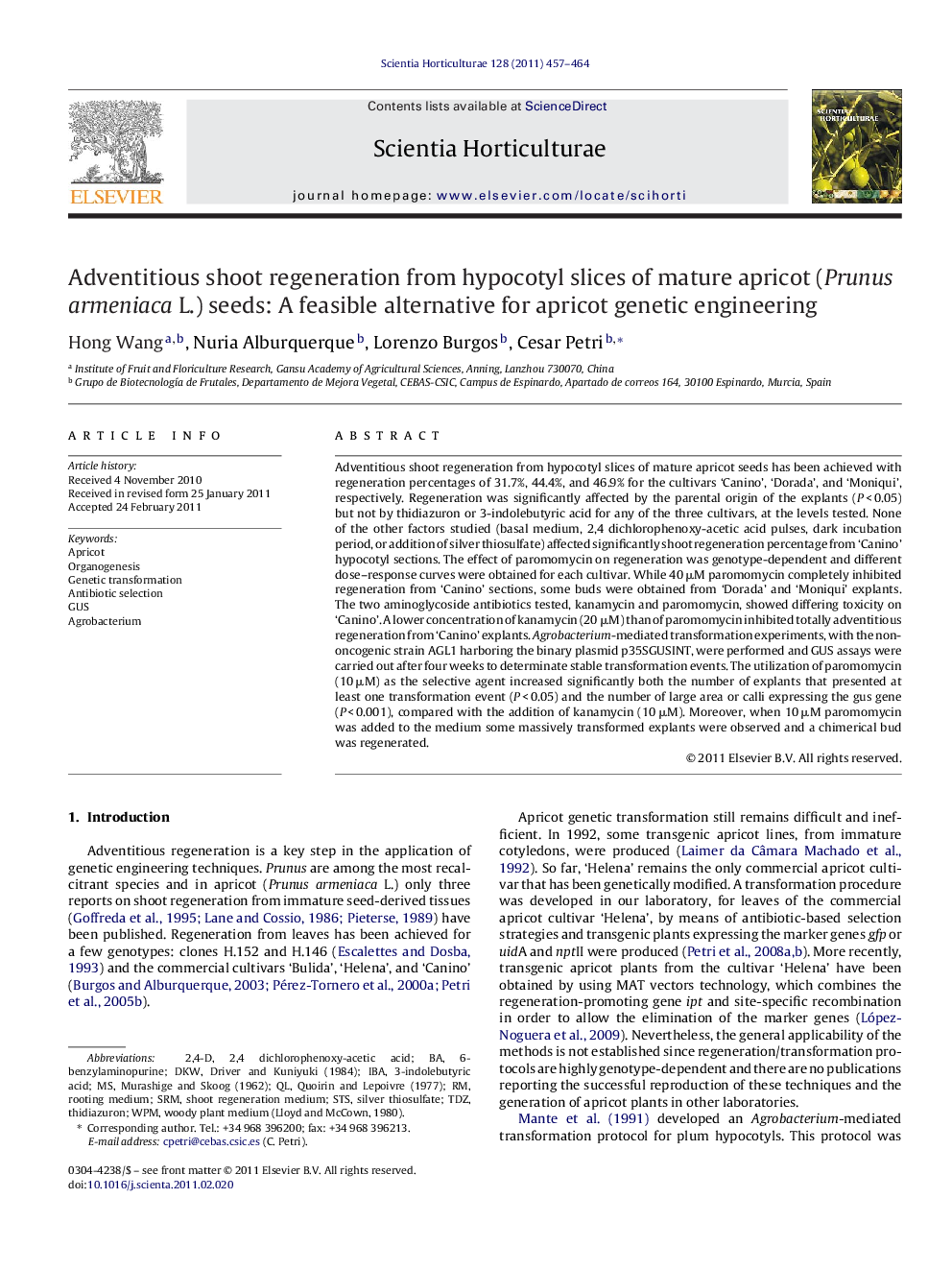| کد مقاله | کد نشریه | سال انتشار | مقاله انگلیسی | نسخه تمام متن |
|---|---|---|---|---|
| 4568252 | 1331292 | 2011 | 8 صفحه PDF | دانلود رایگان |

Adventitious shoot regeneration from hypocotyl slices of mature apricot seeds has been achieved with regeneration percentages of 31.7%, 44.4%, and 46.9% for the cultivars ‘Canino’, ‘Dorada’, and ‘Moniqui’, respectively. Regeneration was significantly affected by the parental origin of the explants (P < 0.05) but not by thidiazuron or 3-indolebutyric acid for any of the three cultivars, at the levels tested. None of the other factors studied (basal medium, 2,4 dichlorophenoxy-acetic acid pulses, dark incubation period, or addition of silver thiosulfate) affected significantly shoot regeneration percentage from ‘Canino’ hypocotyl sections. The effect of paromomycin on regeneration was genotype-dependent and different dose–response curves were obtained for each cultivar. While 40 μM paromomycin completely inhibited regeneration from ‘Canino’ sections, some buds were obtained from ‘Dorada’ and ‘Moniqui’ explants. The two aminoglycoside antibiotics tested, kanamycin and paromomycin, showed differing toxicity on ‘Canino’. A lower concentration of kanamycin (20 μM) than of paromomycin inhibited totally adventitious regeneration from ‘Canino’ explants. Agrobacterium-mediated transformation experiments, with the non-oncogenic strain AGL1 harboring the binary plasmid p35SGUSINT, were performed and GUS assays were carried out after four weeks to determinate stable transformation events. The utilization of paromomycin (10 μM) as the selective agent increased significantly both the number of explants that presented at least one transformation event (P < 0.05) and the number of large area or calli expressing the gus gene (P < 0.001), compared with the addition of kanamycin (10 μM). Moreover, when 10 μM paromomycin was added to the medium some massively transformed explants were observed and a chimerical bud was regenerated.
► Regeneration from apricot mature seed hypocotyl slices achieved from 3 cultivars.
► Regeneration was only significantly affected by the genotype.
► The effect of paromomycin on regeneration was genotype dependent.
► Paromomycin was more effective as selective than kanamycin.
► The addition of 10 μM paromomycin allowed the regeneration of a chimerical bud.
Journal: Scientia Horticulturae - Volume 128, Issue 4, 10 May 2011, Pages 457–464